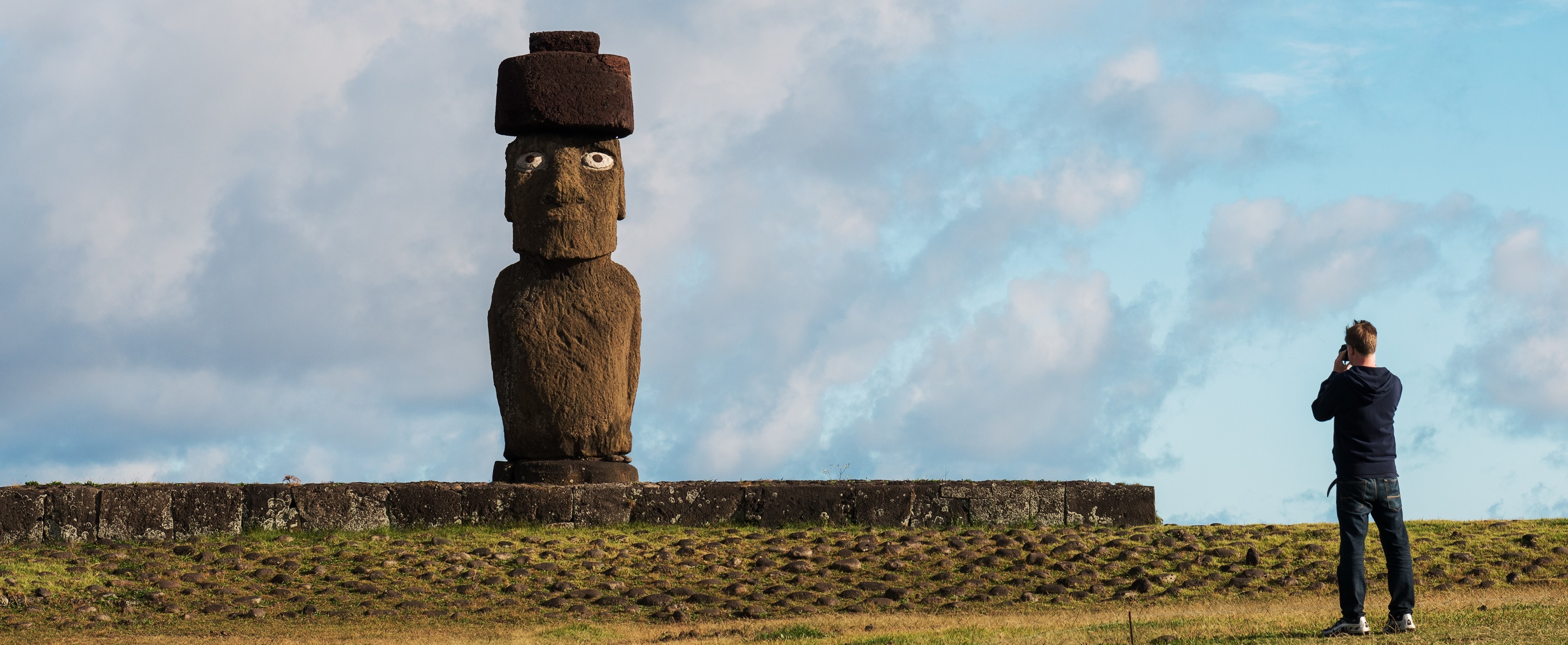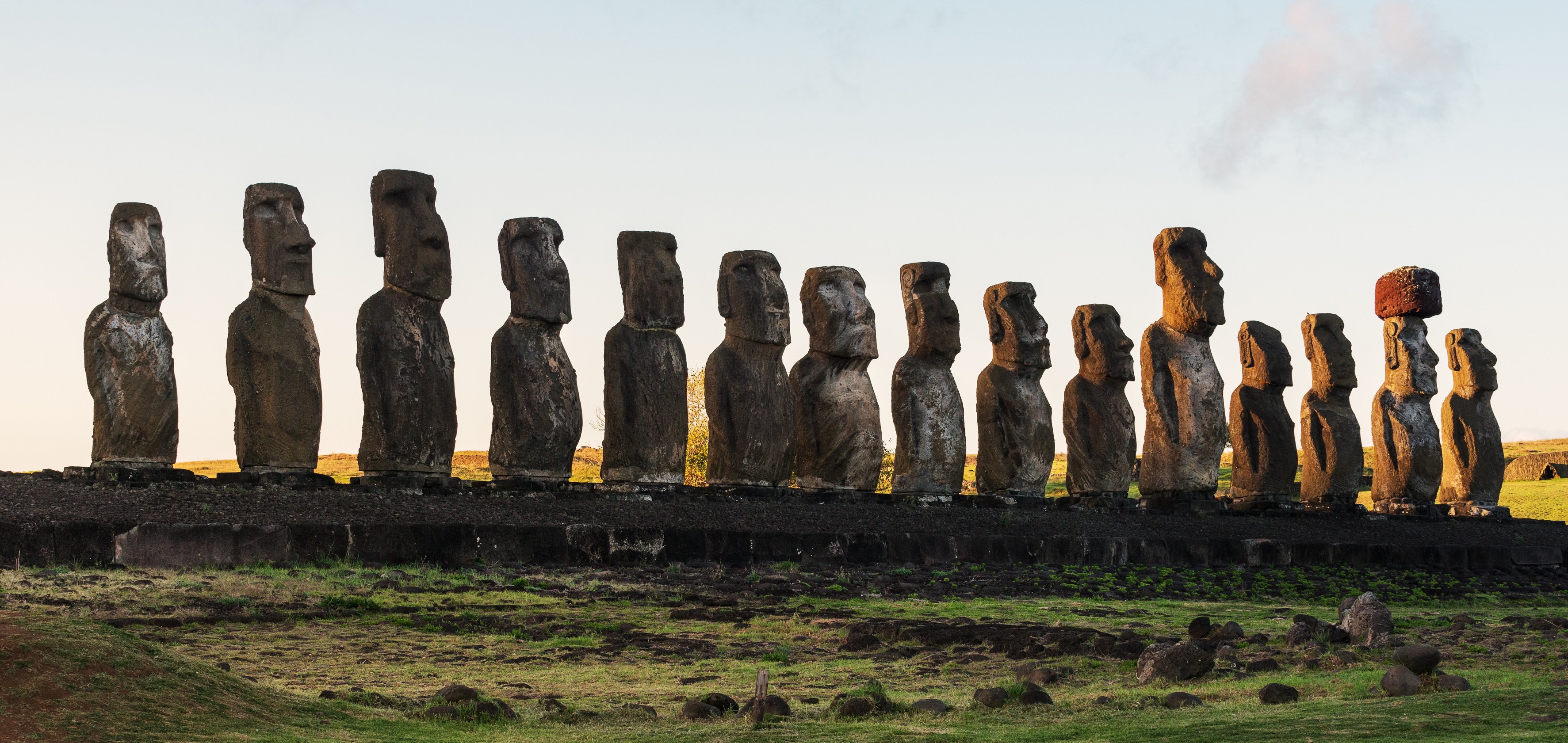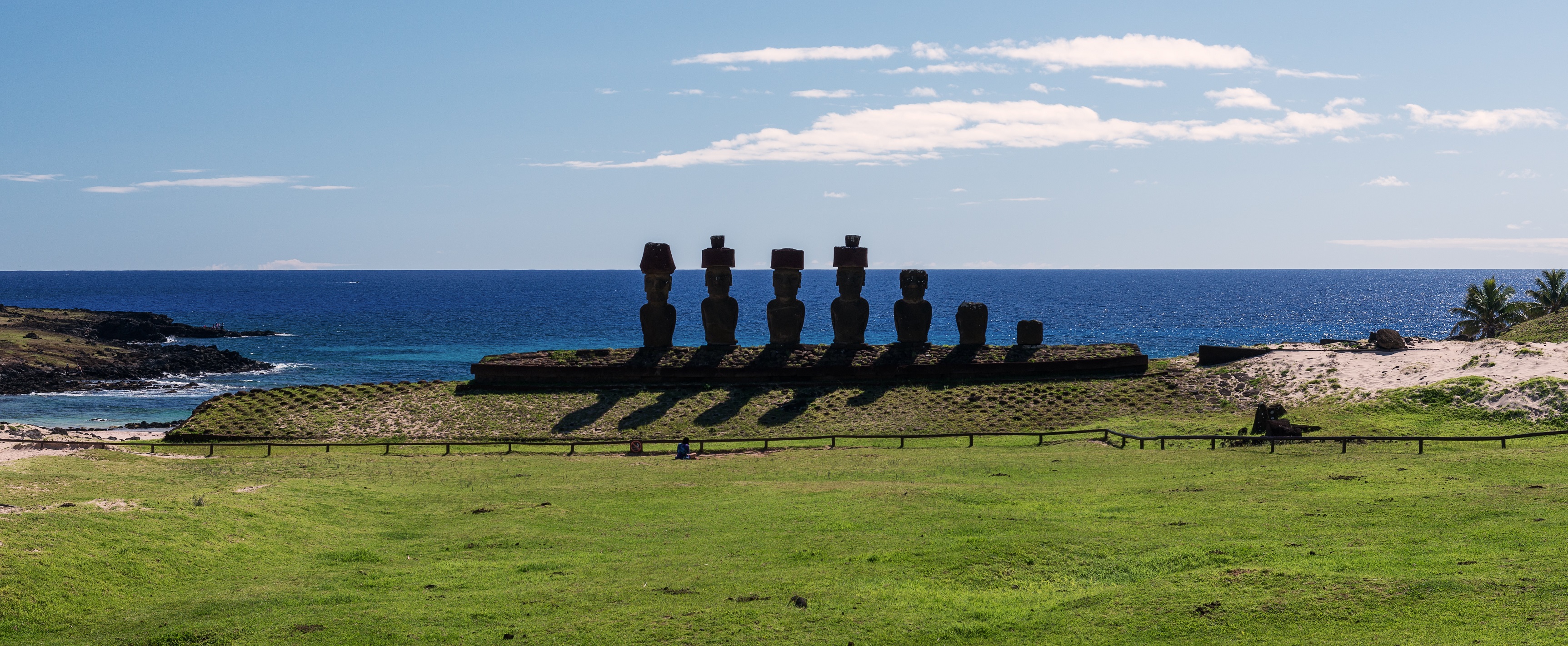Chile – Fascinating facts about the Moai of Rapa Nui
Chile is an incredible destination, where the impossible is possible. It has unique and extraordinary places such as the Rapa Nui National Park and its mythical Moai, mysterious statues filled with curiosities and fun facts.
The Rapa Nui National Park is one of these places, located in the world’s most remote island. Unesco declared it a World Heritage Site in 1995 because of its Moai, the monumental sculptures that keep the primitive Polynesian culture alive. These monolithic statues are the island’s most important and striking tourist attraction, as they are considered masterpieces of humankind. Surely it has already crossed your mind to visit this paradise and of course you will do it at the right time. Now we invite you to explore this destination with 5 facts about the Moai of Rapa Nui that will inspire you.

Why were they built?
There is no certainty regarding why the Moai of Rapa Nui were built and it is one of the biggest mysteries surrounding these fascinating monuments, but most versions suggest that they were built for religious purposes. They are said to represent the deities of Rapa Nui or the first inhabitants of the island. They are a homage to the island’s ancestors, who according to the myth, after they died, they casted spiritual powers to protect their clans.
How were they made?
These legendary sculptures, most of which are approximately 4 meters high, were made from huge volcanic stones, red scortia and basalt. According to several hypotheses, for the Moai of Rapa Nui, large stones were chosen first and then they were carved frontally.
How many Moai are there in Rapa Nui?
There are 900 statues but they are not all in the same place. There are 400 of them on the Rano Raraku quarry, an extinct volcano where supposedly they were built, and 288 are situated on an Ahu, which are ceremonial platforms where people worshipped their ancestors. The remaining Moai ones are distributed in different points of Rapa Nui.

How were they moved?
This is another great mystery, since, because of the enormous size and weight of the Moai, it is difficult to imagine how it was possible to move them around Rapa Nui. Most theories claim that the Moai were laid down on a kind of wooden sleigh over logs, pulled by ropes, and moved around the area.
However, there are other more imaginative versions that claim that clan priests used telekinetic powers to move them or even that aliens may have moved them. There are several myths that say the Moai walked to their positions.
Are they all the same?
No, not all the Moai of Rapa Nui are the same but they were made from the same materials. Most of them (over 800) were built with volcanic rock, but others were made of red ash and basalt. They are not all the same size, although in average they are 4.5 meters tall. For example, one of the most outstanding sculptures is the Te Tokanga (The Giant) that is over 21 meters long and weighs more than 270 tons.
Another aspect that makes a difference is the time when they were built. The first ones are smaller and have more rounded heads and bodies. Later they became more slender and acquired straighter shapes, larger ears and long noses. There are no two sculptures alike and that is because each of them possibly represented a different deity or ancestor, and therefore their features would have been personalized.





